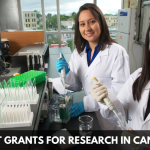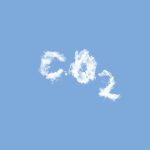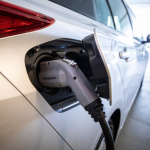The low carbon economy challenge is now open for business! If you are an entrepreneur with a great idea for reducing greenhouse gas emissions, you can apply for up to $25 million in funding. The deadline for Expressions of Interest is March 25, 2022, so don’t delay!
Read More: What is the Carbon Tax Rebate and How to Get It
The low carbon economy challenge is a new program from the Government of Canada. It is designed to help businesses reduce greenhouse gas emissions and transition to a low carbon economy. The funding is available for a wide range of projects, including research and development, commercialization, and marketing.
If you are interested in applying for funding, you first need to submit an Expression of Interest. This is a short document that outlines your project and explains how it will reduce greenhouse gas emissions. The government will review all Expressions of Interest and select the best projects for funding.
If you are selected for funding, you will need to submit a full application. This application will include more details about your project and how it will reduce greenhouse gas emissions. The government will then review your application.
The Low Carbon Economy Fund includes the Low Carbon Economy Challenge (LCEF). It supports Canada’s clean growth and climate action initiatives by granting around $500 million to a wide range of recipients, leveraging Canadian ingenuity to reduce greenhouse gas (GHG) emissions and achieve clean growth. The Champions stream and the Partnerships stream are the two streams that make up the Challenge.
The low carbon economy challenge is a great opportunity for businesses of all sizes. If you have a great idea for reducing greenhouse gas emissions, don’t hesitate to apply.
Funding that Is Available
The second intake of the Champions stream is now taking Expressions of Interest, with over $200 million in financing available for projects that reduce greenhouse gas emissions. Applicants can request money for qualified project expenses ranging from $1 million to $25 million, with cost-share ranging from 25% to 75% of total project costs depending on the recipient type.
The maximum federal share for individual grantees is as follows:
· 25% for for-profit enterprises in the private sector
· 40% for regional, local, and municipal governments|
· Not-for-profit groups will receive 40% of the proceeds.
· 50% for provincial governments, bodies, and boards
· 75% for territorial governments, bodies, and boards
· Indigenous communities and organizations will receive 75% of the funds.
When to Apply?
The Champions stream’s Expression of Interest period begins on January 27, 2022, at 00:01 a.m. Eastern Standard Time (EST) and ends on March 25, 2022, at 08:00 p.m. Eastern Daylight Time (EDT) (EDT).
Important dates:
1. Expressions of Interest will be accepted until January 27, 2022.
2. Expressions of Interest are due by March 25, 2022.
3. Invitation to submit a formal proposal in May 2022 (or notification of ineligibility)
4. Final financing decisions will be made in the fall of 2022.
5. Project completion is scheduled for March 2025.
Who Is Eligible?
The Champions stream accepts applications from a wide spectrum of people, including:
· Governments, agencies, or boards in the provinces
· territorial governments, boards, or commissions
· First Nations, Métis, and Inuit governments, communities, or organizations regional/local/municipal governments
· bodies or boards of the public sector
· organizations that are not for profit
· Small, medium, and big for-profit firms in the private sector
Qualifying Requirements for the Project:
The eligibility requirements for the low carbon economy challenge vary depending on the type of project you are proposing. Generally, projects must reduce greenhouse gas emissions by at least 25% to be eligible for funding. Some of the eligibility requirements for research and development projects include the project must be new or innovative. The project must have the potential to reduce greenhouse gas emissions by at least 25%.
A project must result in reductions in GHG emissions in 2030 and over the project’s lifetime to be considered eligible.
These cuts must be made in the following ways:
– beyond what is required by existing regulations, standards, or codes and ongoing work by project proponents (incremental) directly and immediately the result of activities funded by the program.
– to sources of emissions controlled by the applicant or project partner (direct) and/or grid electricity emissions (acquired) beyond what is required by existing regulations, standards, or codes and ongoing work by project proponents (incremental) directly and immediately the result of activities funded by the program.
Projects must also meet the following eligibility criteria:
-a willingness to use commercially accessible technology
-confirmation of project location
– Electricity or fuel production must be largely for the applicant’s or identified partner’s own consumption, within the applicant’s or identified partner’s operations (except for projects located in rural or remote communities or for district energy or industrial combined-heat-and-power).
Projects that Aren’t Eligible
Projects that look into prospective ways to reduce GHG emissions but don’t put them in place aren’t qualified, such as feasibility or other pre-engineering studies research, development, and demonstration projects educational or capacity-building initiatives.
Regardless of whether or not the other program conditions are met, the following activity types within a project are ineligible:
o Transportation that is active (e.g., biking or pedestrian infrastructure)
o New structures are being built (wherein GHG emissions reductions are obtained relative to a hypothetical alternative new building)
o For new projects, district energy systems are available.
o Infrastructure for electricity transmission and distribution
o Carbon sinks are being improved (e.g., carbon sequestration in forests or soils)
o Infrastructure for fuel transportation
o Lighting retrofits with light-emitting diodes (LEDs)
o Infrastructure and vehicles for public transportation
o Purchasing new automobiles
o Reductions based primarily on a change in behavior
o Reductions based only on the applicant’s products for market consumption (i.e., when GHG emissions reductions can only be realized through the purchase, installation, and/or use of the product by an identifiable third party)
o Vehicles with zero emissions (ZEVs) and infrastructure for ZEVs
Other funding alternatives are available through the Low Carbon Economy Leadership Fund, the Our environment site, the Clean Growth Hub, and the Innovation Canada page for projects that are ineligible or qualified but not selected for financing under the Challenge stream.
How to Get Started?
The application process for this intake is split into two stages:
o submission of an Expression of Interest for the purpose of determining project eligibility
o submission of a formal proposal to assess the merits of projects
Only those who have initiatives that are eligible will be invited to submit a Formal Proposal. To understand more about the application process, all applicants should read the Expression of Interest Guide. Applicants must submit their Expressions of Interest through the Program Information Management System, an online application portal, once they are ready to apply (PIMS). To access PIMS, applicants must first create a Single Window Information Manager (SWIM) profile. On the SWIM website, they can discover directions for creating a user profile, including a step-by-step walkthrough.
To Wrap It All Up
The Government of Canada has opened applications for the Low Carbon Economy Challenge, which will provide roughly $500 million to a wide range of applicants in order to reduce greenhouse gas (GHG) emissions and generate clean growth in support of Canada’s clean growth and climate action initiatives.
The second intake of the Champions stream is now taking Expressions of Interest, with over $200 million in financing available for projects that reduce greenhouse gas emissions.
Applicants can request money for qualified project expenses ranging from $1 million to $25 million, with cost-share ranging from 25% to 75% of total project costs depending on the recipient type.














Leave a Reply